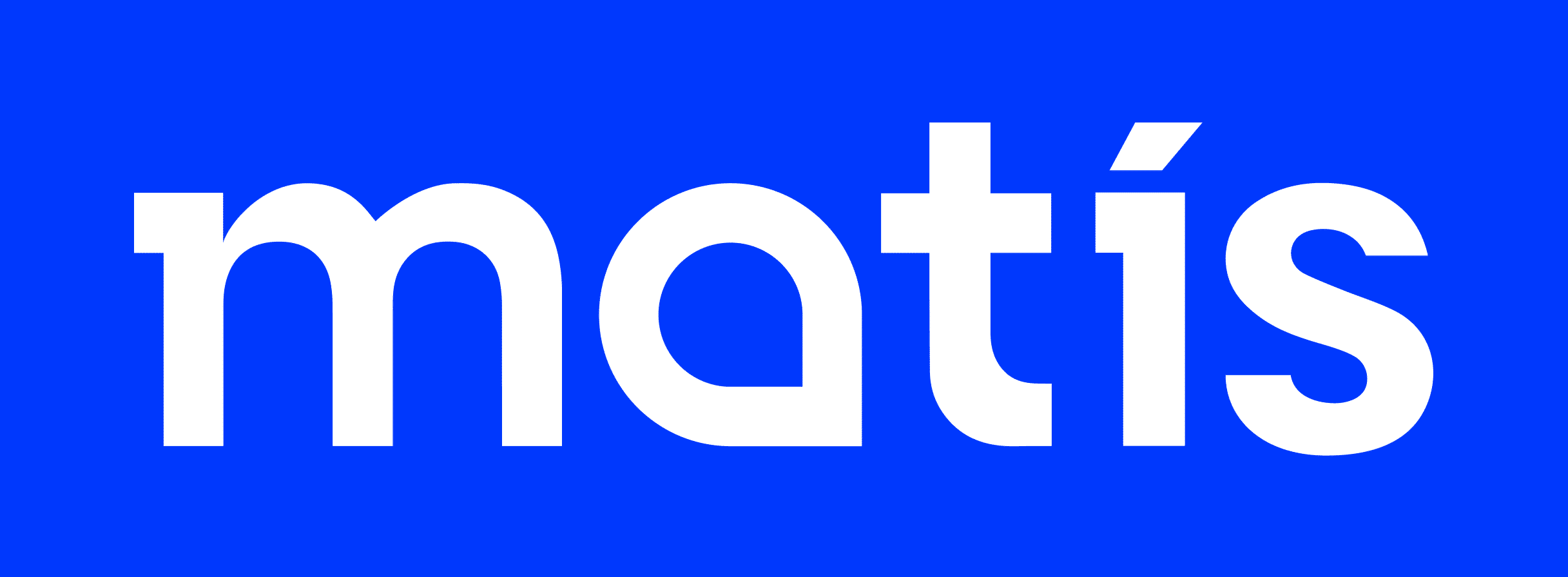Skýrslan er lokuð / This report is closed
Category: Reports
This report presents the results of an experiment performed by Matis ohf. for Roquette.
The trial objective was to compare the effect of different inclusion levels of corn gluten meal and Zearalenone on growth of Atlantic salmon (Salmo salar) and histopathology variances of the intestinal tissue and liver tissue.
View report
This report summarizes the results of monitoring of undesirable substances in edible seafood in 2021. The monitoring began in 2003 with the help of the then Ministry of Fisheries, the current Ministry of Industry and Innovation, and Matís ohf. on the collection of data and the publication of reports for this systematic monitoring during the period 2003-2012. Due to a lack of funds for this monitoring project, this important data collection was suspended as well as the publication of results in the period 2013-2016. The project started again in March 2017, but due to a lack of funds, it now only covers the monitoring of undesirable substances in edible parts of seafood from the resource intended for human consumption, and not fishmeal and fish oil for feed. For the same reason, chemical analyzes of PAHs, PBDEs and PFCs are no longer performed.
The aim of the project is to demonstrate the status of Icelandic seafood in terms of safety and health, and to use the data in the risk assessment of food to ensure the interests of consumers and public health. The project builds a knowledge base on the amount of undesirable substances in economically important species and marine products. It is defined as a long-term project where expansion and revision are constantly needed.
In general, the results obtained in 2021 were in line with previous results from 2003 to 2012 and 2017 to 2020. The results showed that Icelandic seafood contains an insignificant amount of persistent organic pollutants such as dioxins, PCBs and pesticides.
In this report, the maximum levels of the European Union (EU) for dioxins, dioxin-like PCBs (DL-PCBs) and non-dioxin-like PCBs (NDL-PCBs) in food were according to Regulation no. 1259/2011 used to assess how Icelandic seafood meets EU requirements. The results for 2021 show that all samples of seafood for human consumption were well below EU maximum levels for persistent organic pollutants and heavy metals. The concentration of so-called ICES6-PCBs turned out to be low in the edible part of seafood, compared to the EU maximum value according to Regulation no. 1259/2011. The results also showed that the concentration of heavy metals, such as cadmium (Cd), lead (Pb) and mercury (Hg) in Icelandic seafood was always below the EU maximum values.
This report summarizes the results obtained in 2021 for the screening of various undesirable substances in the edible part of Icelandic marine catches.
The main aim of this project is to gather data and evaluate the status of Icelandic seafood products in terms of undesirable substances and to utilize the data to estimate the exposure of consumers to these substances from Icelandic seafood and risks related to public health. The surveillance program began in 2003 and was carried out for ten consecutive years before it was interrupted in 2013. The project was revived in March 2017 to fill in gaps of knowledge regarding the level of undesirable substances in economically important marine catches for Icelandic export. Due to financial limitations the surveillance now only covers screening for undesirable substances in the edible portion of marine catches for human consumption and not feed or feed components. The limited financial resources have also required the analysis of PAHs, PBDEs and PFCs to be excluded from the surveillance, providing somewhat more limited information than in 2013. However, it is considered a long-term project where extension and revision are constantly necessary.
In general, the results obtained in 2021 were in agreement with previous results on undesirable substances in the edible part of marine catches obtained in the monitoring years 2003 to 2012 and 2017 to 2020.
In this report from the surveillance program, the maximum levels for dioxins, dioxin-like PCBs and non-dioxin-like PCBs in foodstuffs (Commission Regulation 1259/2011) were used to evaluate how Icelandic seafood products measure up to limits currently in effect.
The results show that with regard to the maximum levels set in the regulation, the edible parts of Icelandic seafood products contain negligible amounts of dioxins, dioxin like and non-dioxin-like PCBs. In fact, all samples of seafood analyzed in 2021 were below EC maximum levels.
Furthermore, the concentration of ICES6-PCBs was found to be low in the edible part of the marine catches, compared to the maximum limits set by the EU (Commission Regulation 1259/2011).
The results also revealed that the concentrations of heavy metals, eg cadmium
(Cd), lead (Pb) and mercury (Hg) in the edible part of marine catches were in all samples well below the maximum limits set by the EU.
View report
In the project, the shelf life of vegetables was examined. Sensory evaluation of tomatoes, potatoes, carrots and beets was carried out for 6 weeks in the summer of 2021. The vegetables were stored under three different storage conditions: (1) Cooler 1 which was at 2 ° C, (2) cooler 2 at 12 ° C and (3) a room that was at about 22 ° C. Sensory evaluation was performed on carrots and beets from a room at 2 ° C and a sensory evaluation of tomatoes and potatoes from a room at 12 ° C. In addition, a quality inspection was carried out on the four vegetable species from all three compartments. Humidity and temperature were monitored in each room, vegetables were weighed to monitor shrinkage and samples were taken for bacterial measurements.
Quality factor (QIM) method was used for sensory evaluation. Sensory evaluation scales were improved throughout the project. Sensory evaluation results using these scales showed that they can be useful in assessing the freshness of the vegetables studied. Bacterial measurements were performed on tomatoes and paper packaging of tomatoes. The results of those measurements showed that microorganisms grow well on paper packaging.
Beets and carrots lost a considerable amount of weight, but it must be borne in mind that the humidity in the refrigerated rooms was not as good as it could be. Quality assessed by sensory evaluation became poorer with time for all the vegetable species. The quality deteriorated relatively most for tomatoes but least for carrots. This is due to the different shelf life of the species. In the sixth week of the study, all vegetables except carrots were considered unfit for consumption.
The work was part of the project Improved quality, shelf life and less waste in the value chain of Icelandic vegetables but it is funded by the Food Fund. Jóhanna Elín Ólafsdóttir and Guðný Sif Sverrisdóttir were summer employees at Matís for the project. The work yielded important results in the development of sensory evaluation scales and the results will be utilized in shelf life research on vegetables in the future.
The Quality Index Method (QIM) was used for sensory evaluation. Scales were developed for tomatoes, potatoes, carrots and rutabagas. The method was found useful for sensory evaluation of the freshness of vegetables, but the scales need further development. The quality of the vegetables as measured by the QIM method decreased throughout the experiment. The weight of rutabaga and carrots decreased considerably throughout the experiment.
This work was a part of the project Improved quality, shelf-life and reduced waste in the value chain of Icelandic vegetables. The work was important for the development of suitable QIM scales for sensory evaluation of vegetables. Future shelf-life experiments will benefit from this work.
View report
The goal of SeaCH4NGE was to find seaweed that can reduce methane emissions from cattle. This report contains detailed results from this project. Brief summary of results: In vitro analysis (Hohenheim gas test and Rusitec) showed that seaweed reduced total gas production, methane production and methane concentration for three types of seaweed compared to TMR (control sample). The greatest decrease was seen in Asparagopsis taxiformis. Algae samples showed little degradation in the rumen compared to other common ruminant feeds. In-vivo studies: No significant effect on methane production was observed when cattle were fed a mixture of seaweed, nor when dairy cows were fed a brown algae mixture. By giving a small amount of red algae (A. taxiformis) together with brown algae, a slight decrease in methane production could be seen. Quality and safety - milk and meat: Samples were analyzed for heavy metals, minerals and iodine. The content of seaweed did not have a negative effect as the toxic elements As, Cd, Hg and Pb were either not present or in very low amounts. Seaweed (all three mixtures) affected the iodine concentration, which increased. Sensory evaluation: The seaweed treatment affected the taste of butter and UHT milk, but this did not affect whether the products were considered better or worse. No difference in taste was found in beef.
This report is closed until 31.12.2023.
This report is closed
The project is a continuation of the project "Seaweed that improves feed for dairy cows - increased benefit and quality?" With the main goal of examining whether it would be possible to increase the benefit of dairy cows through seaweed administration and examine the chemical content and quality of milk. Also whether seaweed could be used as a mineral source, for example for organic feed that could lead to new products such as high-fat milk and therefore stimulate innovation in cattle breeding.
In this project, special emphasis was placed on examining individual samples of milk and whether algae administration as part of cow feed had an effect on heavy metals, minerals, eg iodine, in the milk.
The greatest effect was on the iodine concentration of the milk.
This report was prepared for Ásta Þórisdóttir at the County Workshop for her Food Fund project Forest system - Weeds or underutilized food resource. Measurements were made of nutrients and contaminants in the forest system. Disciplines and other information were reviewed with regard to the utilization of the forest system for human consumption and other utilization.
It was found that the leaves and roots of the forest system contain various nutrients and the foreign substances mycotoxins and heavy metals were not measurable or below the regulatory limit. A review of scientific articles revealed that the forest system contains the substance deoxypodopilotoxin (DOP), which has a cancer-cell-inhibiting effect. This substance is at the highest concentration in the roots of the forest system and limits the use of the plant for human consumption. Forest systems should not be consumed in large quantities. The use of the plant in textiles, packaging, paper and building materials could be examined. The report summarizes conclusions and recommendations.
This work was carried out for Ásta Þórisdóttir as a part of her project on utilization of cow parsley. Analysis of selected nutrients and food contaminants were carried out. Information on cow parsley in scientific articles was studied. The nutrient content was reported. Mycotoxins and heavy metals were not detected or below the maximum limits set in regulation. The existence of the active compound deoxypodopylotoxin (DOP) in cow parsley was reported in the literature. This compound has antitumor activity which is not preferable for foods. Therefore, cow parsley should not be consumed in large amounts, particularly the roots which have the highest concentration. The utilization of cow parsley for textile, packaging, paper-like material and construction material should be studied. The report includes conclusions and recommendations.
View report
This report presents the results of an experiment performed by Matis ohf. for ISF, represented by Martin Rimbach.
Skýrslan er lokuð / This report is closed
View report
Unique position of foods from Icelandic agriculture - Nutrients and food contaminants
The project summarized data on the chemical content of food from Icelandic agriculture, highlighting the uniqueness and importance of domestic production. Chemical content refers to nutrients, contaminants and antioxidants. The aim of the project was to make knowledge of the uniqueness of food from Icelandic agriculture accessible in terms of chemical content. The benefit is that it will be possible to strengthen the image of domestic agriculture based on the uniqueness of food production. Marketing and promotional activities will take advantage of the results. Domestic production is strengthening in the consumer market.
Data on chemical composition of Icelandic foods from agriculture were collected to evaluate the special position and importance of the domestic production. Nutrients, antioxidants and contaminants in foods were covered. The purpose was to make knowledge on the special position of domestic agricultural foods available. It was expected that the image of Icelandic agriculture would be improved based on the special position of domestic foods. The information is useful as a marketing tool and will be regarded as positive by consumers.



